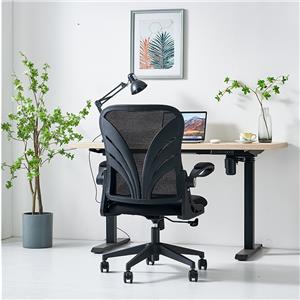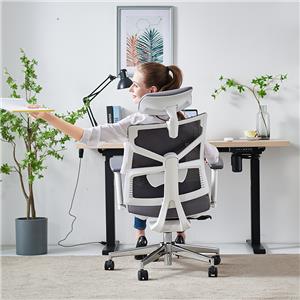"Office family" sitting posture management
Nowadays, among the "office workers" group, there are more and more people with cervical and lumbar problems, and they are increasingly younger. This has a lot to do with the improper sitting posture of "office workers". The height of many people's office chairs is not up to the standard, and they cannot relieve their bodies from backaches. So, how can we adjust the office chair to the best condition?
First, adjust the desk or workbench to the appropriate height according to the nature of the work. For this reason, different desk heights have different requirements on the placement of seats, and sometimes even need to change a seat. Once the height of the desk is fixed, the height of the seat can be adjusted according to the "reference objects" of various parts of the body.
Elbows: On the premise of sitting comfortably, keep your elbows as close to the table as possible to ensure that your upper arms are parallel to your spine. Place your hands on a work surface (such as a notebook or keyboard). Department is at right angles. At the same time, adjust the height of the armrests so that the upper arms are slightly lifted just above the shoulders.
Thighs: Check that your fingers can slide freely under the thighs, at the very front of the chair. If the space is too tight, you need to add an adjustable footrest. If there is a finger's width between your thigh and the front of the chair, then raise the chair height.
Calf: With your buttocks against the back of the chair, try to see if you can push your clenched fist through the gap between the back of your calf and the front of the chair. If you can't do this easily, the chair is too deep and you need to move the back of the chair forward, add a cushion, or replace the chair.
Lower back: Don't huddle in your chair when you're tired, as this can put extra stress on your lower back and discs. Put your buttocks close to the back of the chair. It is best to put a cushion so that the back can bend slightly, so that when you are tired, your body will not shrink into a ball, and the burden on your back can be minimized.
Eye level: Close your eyes, then slowly open your eyes, the line of sight should fall on the center of the computer monitor. If the monitor position is too high or too low, it needs to be adjusted accordingly to reduce neck muscle strain.
Of course, sitting in a fixed position for a long time is not good for the body, so remember to get up and move for at least one to two minutes every half hour. Even something as simple as stretching or going to the bathroom is fine. If possible, walking slowly for 20 minutes can not only reduce the pressure on the spine, but also promote blood circulation, so as to transport nutrients to all parts of the spine.




